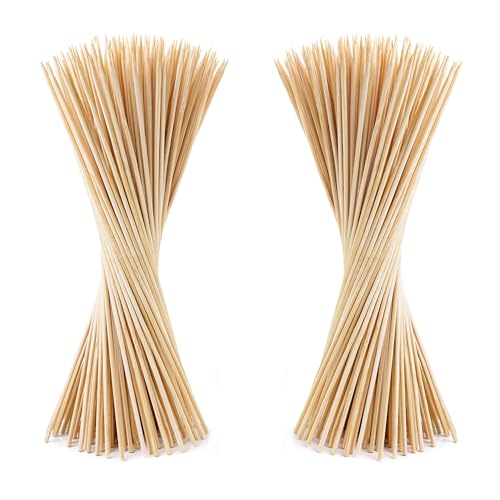Why Soaking Skewers is Important
Soaking skewers before grilling or barbecuing is an essential step that many people overlook. But how long do skewers need to soak? It’s a common question among those who enjoy outdoor cooking. The length of time that skewers should soak depends on various factors. Let’s explore why soaking skewers is important and how long you should soak them for optimal grilling results.
The Purpose of Soaking Skewers
Soaking skewers serves two main purposes. Firstly, it helps to prevent the wooden skewers from burning during the cooking process. Wood is an organic material that is highly susceptible to burning when exposed to high heat for prolonged periods. By soaking the skewers in water, the moisture helps to create a barrier between the wood and the heat source, reducing the risk of them catching fire.
Secondly, soaking skewers also helps to ensure that the food cooks evenly. When dry skewers are placed on a hot grill or barbecue, they can quickly steal the heat from the food, resulting in uneven cooking. By soaking the skewers, they are less likely to draw away heat from the food, allowing it to cook more evenly.
Factors that Influence Soaking Time
The length of time that skewers should soak depends on several factors. One of the most important factors is the type of wood used for the skewers. Thicker and denser woods, such as rosemary, generally require a longer soaking time compared to thinner and less dense woods like bamboo. The thicker the skewer, the longer it needs to soak to ensure it remains moist throughout the cooking process.
Another factor to consider is the cooking method being used. If you plan to grill the skewers over high heat, they will require a longer soaking time compared to cooking at a lower temperature. High heat can quickly dry out the skewers, so soaking them for a longer period can help prevent this from happening.
The type of food being skewered is also important to consider. Delicate and quick-cooking foods like seafood or thinly sliced vegetables may benefit from a shorter soaking time, while denser cuts of meat may require a longer soaking time to ensure they are fully cooked.
Lastly, personal preference plays a role in determining the soaking time. Some people prefer a subtle smoky flavor in their grilled food and may opt for a shorter soaking time, while others prefer moist and tender results, requiring a longer soaking time.
Recommended Soaking Times
While there is no one-size-fits-all answer to how long skewers need to soak, there are some general guidelines you can follow. For thin and lightweight skewers like bamboo, 30 minutes to an hour of soaking time should be sufficient. Thicker and denser skewers like rosemary or oak may require 1 to 2 hours of soaking time or even overnight soaking for optimal results.
If you’re using metal skewers, soaking them is not necessary as they do not burn or absorb moisture. However, it’s still a good idea to brush them with oil before threading the food to prevent sticking.
Tips for Soaking Skewers
To ensure that your skewers are properly soaked, follow these tips:
- Submerge the skewers in a container of water, making sure they are fully immersed. If necessary, place a heavy object on top of the skewers to keep them fully submerged.
- Soak the skewers for the recommended time based on their thickness and the cooking method you plan to use.
- If you’re in a hurry or forgot to soak the skewers in advance, you can use the quick soak method. Boil a pot of water and immerse the skewers for about 10 minutes. This will help to speed up the moisture absorption process.
- After soaking, remove the skewers from the water and pat them dry with a towel before threading the food. This will help prevent excess water from dripping onto the grill or barbecue.
- If you have leftover soaked skewers, you can store them in a ziplock bag in the freezer. This way, you’ll always have pre-soaked skewers ready for your next grilling session.






